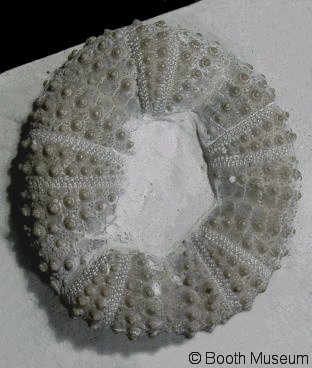 A
A |
 B
B |
|
Tetragramma variolare (Brongniart, 1822)
|
A relatively common regular echinoid from the Grey Chalk Subgroup. Both the test and primary spines are superficially similar to Gautheria (e.g. Gautheria spatulifera) and Phymosoma (e.g. Phymosoma koenigii), but the adoral surface of Tetragramma variolare has 2 or more primary tubercles per interambulacral plate, as opposed to just 1 for Gautheria and Phymosoma (compare). From a practical point of view, Tetragramma in the Grey Chalk whilst Gautheria and Phymosoma are found in the White Chalk. Tetragramma can be distinguished from the contemporary Polydiadema by its biserial pore-pairs (compare).
 A
A |
 B
B |
1). (A) Adapical view of an isolated test (x2, Grey Chalk, Folkestone); (B) Adoral view of a complete test with associated primary spines, (x3.3, Grey Chalk) (both from the Willett Collection, Booth Museum (A) BMB 007850, by kind permission of John Cooper).
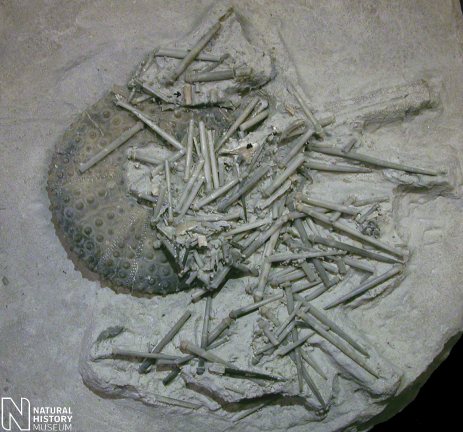
2). Adoral view of a complete test with a large compliment of primary spines (x1.2, Grey Chalk, Dover Kent, BMNH (British Museum (Natural History) London) E1085. Image © 2008 The Natural History Museum, by kind permission.
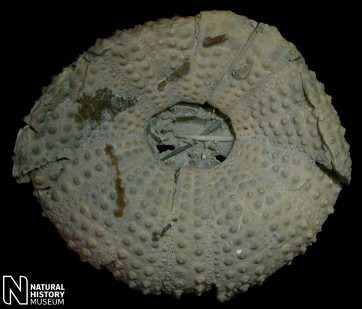 A A |
 B B |
3). A very large and rather crushed test, with associated primary spines; (A) Adoral view ; (B) Apical view (x1.2, Grey Chalk, Dover Kent, BMNH (British Museum (Natural History) London) E1943. Images © 2008 The Natural History Museum, by kind permission.
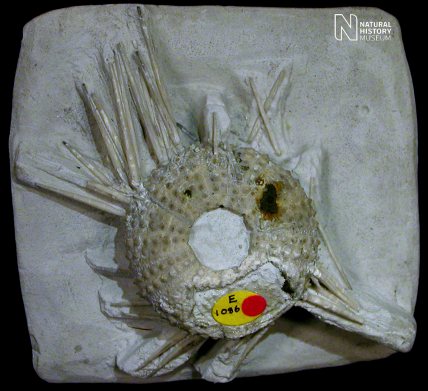
4). Adoral view of an exceptional specimen with a large compliment of articulated primary spines (x1.3, Grey Chalk, Folkestone Kent, BMNH (British Museum (Natural History) London) E1086. Image © 2008 The Natural History Museum, by kind permission.

5). Adapical view of a recently collected specimen retaining a large compliment of spines and other skeletal elements (x1.5, Grey Chalk, near Cow Gap, Eastbourne (from the collection of Martin Ellis, image used by kind permission).
 A
A |
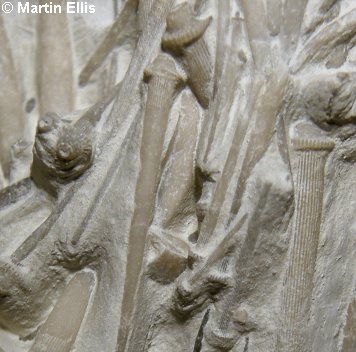 B
B |
6). Details of the above specimen (Grey Chalk, near Cow Gap, Eastbourne (from the collection of Martin Ellis, images used by kind permission); (A) Adapical view of test with associated spines (x2.3); (B) Lantern elements amongst primary spines (x5.5).
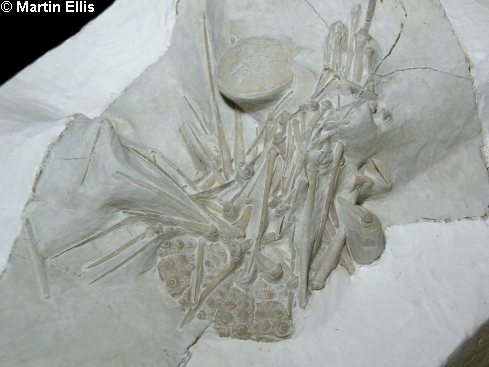
7). Low angle view of the adapical surface of the above specimen (x1.6, Grey Chalk, near Cow Gap, Eastbourne (from the collection of Martin Ellis, image used by kind permission).
 A
A |
 B
B |
8). Associations of primary spines; (A) Detail of figure 4 (x2.5); (B) Detail of figure 2 (x2.9). Images © 2008 The Natural History Museum, by kind permission.
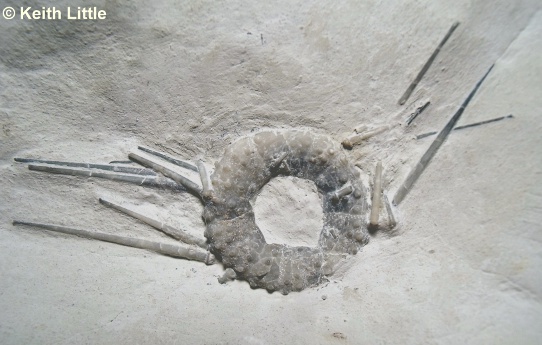 |
9). Adapical view of a small test retaining some of the primary spines (x2.7, Grey Chalk, Dover, Kent, in the collection of Keith Little). Image © 2011 Keith Little, by kind permission.
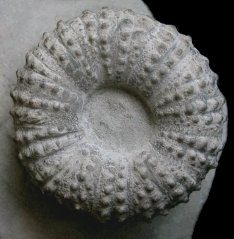 A A |
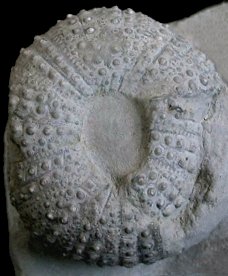 B
B |
10). Adoral views of isolated tests of Tetragramma variolare, both x3, Grey Chalk Subgroup, near Cow Gap, Eastbourne (from the collection of L. R. Strevens, images used by kind permission).
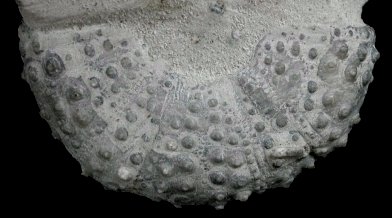 A A |
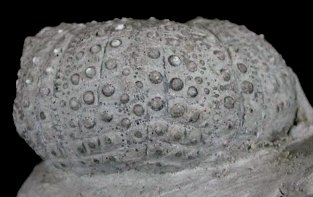 B
B |
11). Isolated tests (both x4, Grey Chalk, near Cow Gap, Eastbourne (from the collection of L. R. Strevens, images used by kind permission)). (A) Adoral view of a partial test; (B) Lateral (side) view of a complete test.